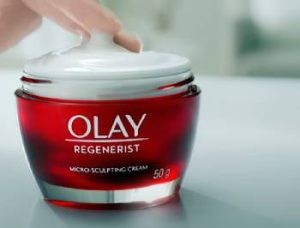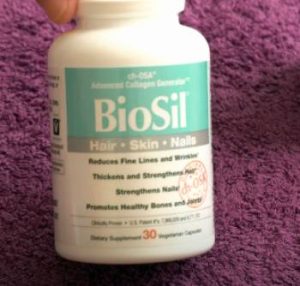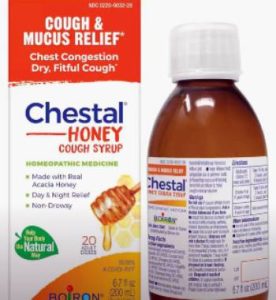If you’re looking for a reliable makeup remover that deeply cleanses without stripping your skin, the DHC Deep Cleansing Oil is worth buying.
I’ve used it nightly for months and it melts away stubborn waterproof makeup and sunscreen while keeping my skin soft and hydrated.
In this review you’ll see how it performs in real use, its pros and cons, maintenance care tips, and how it stacks up to other cleansing oils.
By the end you’ll know whether this oil fits your skincare routine and delivers the clean you’re aiming for.
My Experience with DHC Deep Cleansing Oil

I started using DHC after running through several bottles of other oil cleansers that either broke me out or left a greasy residue.
From the first use I noticed how rich and silky the olive oil felt gliding over my dry face.
I was amazed at how it dissolved tenacious waterproof mascara and layered sunscreen with barely a rub—instead, I gently massaged and watched it emulsify.
Rinsing it away with lukewarm water, the oil turned milky and vanished completely—no film, no slickness.
My skin felt clean but not dry—more balanced and soft.
Within a week I stopped needing toner to remove residue.
Using it every evening as the first step in a double cleanse, I saw fewer breakouts, less blackhead buildup, and improved skin texture over time.
I also appreciated that it’s fragrance-free and ideal for all skin types—even my sensitive cheeks tolerated it well.
Over months, I noticed better absorption of serums and moisturizers afterward.
The lightweight bottle fit nicely on my sink ledge and the pump dispensed just enough—in my case three pumps for face and eyes.
That economy plus visible results made me confident this was a cleanser worth keeping for the long haul.
Maintenance Tips for Best Use
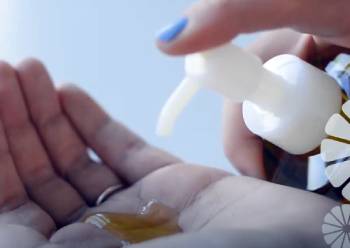
- Store the bottle away from direct sunlight to preserve the botanical oils.
- Replace the bottle within two years of opening to avoid oxidation of the olive oil.
- Wet hands lightly before pump use to prevent product dilution.
- Rinse thoroughly with lukewarm water and consider a gentle second cleanse if you wear heavy sunscreen.
- Wipe the pump nozzle occasionally to prevent clogging with dried oil residue.
- Use the first pump under dry hands and face—avoid wet skin before dispensing to preserve clean texture.
- Test patch a small area if you have acne-prone skin to confirm tolerance before full use.
- Follow up with toner or essence in double cleansing routines to ensure all residue is cleared.
- Replace the bottle cap and pump tightly to prevent accidental spills or leaks.
- Rinse tools or cloths you use to massage off oil regularly to avoid bacteria buildup.
Pros and Cons of DHC Deep Cleansing Oil
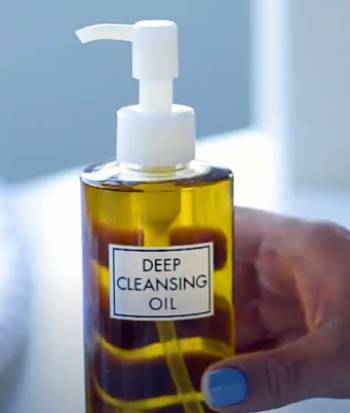
Pros:
- Effortless Makeup Removal: The oil dissolves waterproof mascara, pigments, sunscreen, and excess sebum with minimal rubbing—just massage and rinse clean.
- Soft, Balanced Finish: Unlike harsh cleansers, DHC leaves skin feeling nourished—not tight or irritated—ideal for nightly use on all skin types.
- Natural Ingredients: High-quality olive oil, vitamin E, and rosemary leaf oil hydrate and protect, with antioxidant benefits and a botanical base.
- No Greasy Residue: It emulsifies cleanly with water, leaving no film behind and making it feel like a second cleansing step isn’t mandatory.
- Zero Fragrance and Gentle Formulation: Free of perfume or essential oils, it suits reactive and sensitive skin well, without causing redness or T-zone flare-ups.
- Economical Usage: A small amount—about three pumps—does the job. My 200 mL bottle lasted well over three months of nightly use.
- Gentle Around Eyes: Even stubborn eyeliner and falsies melted away without stinging or irritation during eye cleansing.
Cons:
- May Not Feel Silkily Luxurious to Some: Compared to richer cleansing balms, the texture is lighter and thinner; if you prefer thick buttery feels, note the oil is more fluid.
- Slight Residue in Hard Water Areas: In regions with very hard water, you may need to rinse twice to avoid a faint sheen or residue.
- Not a Standalone Cleanser: It’s a great first step in a double cleanse but doesn’t replace foaming or gel cleansers for deep pore cleansing.
- Environmental Stress Factors: Storage in humid bathrooms may cause bottle labeling to fade over time; the plastic bottle feels sturdy but the label can wear.
- No Pump Lock Mechanism: Travelers may find the pump opens in luggage—so I recommend sealing or removing it during transport.
- Oil Alone Doesn’t Reduce Acne: While it removes surface impurities, active acne may still require targeted treatments like benzoyl peroxide or salicylic acid.
- Price Point: It’s more expensive than generic cleansing oils—but you get better ingredients and transparent formulation in return.
DHC Vs. Other Cleansing Oils
- DHC Vs. Banila Co Clean It Zero
Both DHC and Banila Co Clean It Zero are excellent at removing makeup, but they couldn’t feel more different in use.
Banila’s balm-to-oil texture starts out solid and melts into the skin, making it feel more luxurious for some users.
However, that rich texture can feel a bit too thick during summer months or if you have oily or acne-prone skin.
DHC, on the other hand, comes out as a light oil from the start. It spreads easily, rinses clean faster, and doesn’t leave a heavy finish.
Banila Co sometimes takes extra rinsing, and in my experience, I often needed a warm cloth to remove all of it fully. DHC’s water-soluble formula washed off in seconds—no cloth needed.
One thing I’ve also noticed is that DHC doesn’t irritate my eyes at all, while Banila has stung on occasion when removing mascara.
If you wear a lot of waterproof eye makeup, DHC may feel more comfortable for regular use. Plus, DHC’s ingredient list is shorter and more transparent, with fewer preservatives and no synthetic fragrance.
So if you prefer simplicity, fragrance-free formulations, and a lighter texture that still removes everything—DHC wins. But if you love that thick, balm-like feel and want a sensory cleansing experience with a bit of fragrance, Banila might be your pick.
- DHC Vs. Shu Uemura Ultime8 Sublime Beauty Oil
Shu Uemura is often regarded as the luxury oil cleanser king. It’s undeniably gorgeous, packed with eight botanical oils, and delivers a spa-like experience. The bottle itself is high-end and feels like a luxury skincare trophy on your vanity.
But is it worth over twice the price of DHC? That depends on what you’re after.
In my daily routine, I found Shu Uemura to leave a more nourishing, glowy film on the skin, which felt lovely during colder months.
However, it didn’t rinse off as cleanly. On a hot day or under makeup, my face felt like it had a slight residue even after cleansing.
With DHC, I never had that issue. It’s not flashy, but it does its job—cleans thoroughly, hydrates just enough, and leaves no stickiness behind. I could apply my serums right after without needing to blot or wait.
Also worth noting: Shu Uemura’s beautiful ingredients might not suit sensitive skin. The product contains more fragrance and exotic oils, which—while pleasant—can be too much for reactive skin types. DHC is much more minimalistic and has worked for me even during bouts of eczema or irritation.
In terms of value, DHC stands out. It’s affordable, consistent, and still feels like a little luxury in your routine—just without the designer price tag.
- DHC Vs. Kose Softymo Deep Cleansing Oil
Kose Softymo is the drugstore star of Japanese cleansing oils—cheap, accessible, and surprisingly effective.
I’ve used the “Deep” version and it’s solid for makeup removal, but the key difference lies in ingredients and skin after-feel.
Softymo uses mineral oil and petroleum-based ingredients to create that slipperiness, which works well but can sometimes clog pores if you don’t rinse thoroughly.
DHC uses high-grade olive oil instead, making it feel more nourishing and natural.
When I used Kose regularly, I noticed that while it cleaned well, my skin started feeling a little congested. Small bumps appeared on my chin, which I didn’t experience with DHC.
Also, the DHC pump feels sturdier and more hygienic. Softymo’s bottle cap sometimes leaks or drips after use. For a short-term or travel cleanser, Softymo is a good budget backup. But if you’re looking for long-term skin health, I’d stick with DHC.
- DHC Vs. Clinique Take The Day Off Cleansing Oil
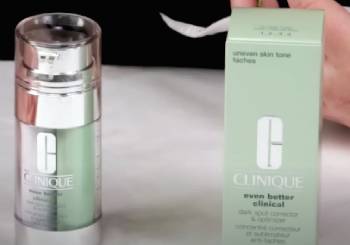
Clinique’s cleansing oil is another fragrance-free option that often appeals to those with sensitive skin. Texture-wise, it’s thinner than DHC and spreads easily. It also emulsifies quickly with water.
That said, in my tests, Clinique didn’t feel as thorough on waterproof makeup. I always needed to go back a second time to remove every last trace of eyeliner and mascara. With DHC, one cleanse usually did the trick.
The other difference is how your skin feels afterward. Clinique felt a bit too stripped on my drier areas. DHC, thanks to the olive oil base and vitamin E, always left me feeling balanced.
Also, Clinique’s product sometimes foamed slightly during use—probably due to added emulsifiers—which made it feel more like a hybrid between an oil and a cleansing gel.
Some might like that; personally, I preferred the purely oil-based experience of DHC for removing everything without irritation.
Overall, both are good, but DHC feels more nourishing, effective, and economical per use.
- DHC Vs. Caudalie Make-Up Removing Cleansing Oil
Caudalie’s cleansing oil smells amazing—that light grape scent is refreshing and instantly gives you the “spa” feeling. But that fragrance is a double-edged sword.
If you have reactive or rosacea-prone skin, scented skincare can be risky. I had no immediate issues, but over time I started noticing a little redness after using Caudalie several nights in a row.
In terms of performance, Caudalie gets the job done on light to moderate makeup. However, when I was wearing heavy foundation or waterproof eyeliner, it didn’t remove everything on the first try. I also noticed a bit of residue lingering if I didn’t double cleanse.
DHC, by contrast, never fails on heavy-duty makeup days. Even after filming or long events where I have multiple layers of setting spray, sunscreen, and long-wear makeup, it handles everything easily.
While Caudalie is lovely and fits a self-care moment, DHC is the workhorse that shows up every night and never lets you down. You won’t feel like you’re treating yourself with fancy oils, but you will feel clean, balanced, and clear-skinned.
Also Read: My Thoughts On Anua Cleansing Oil
Frequently Asked Questions (FAQs)
Yes. It’s designed for nightly use and perfectly safe to use every evening—even for sensitive and acne-prone skin—thanks to its gentle botanical formula.
No—as long as you rinse thoroughly, it should not clog pores. It emulsifies cleanly and rinses away with no residue, making it non-comedogenic in most cases.
It helps dissolve excess sebum and impurities, which may reduce blackheads over time. But you may still need occasional exfoliation or clay masks for deeper removal.
Many dermatologists support oil cleansing—especially olive oil-based balms like DHC—for breaking down makeup and protecting skin barrier, as long as it’s followed by a gentle rinse or second cleanse.
Final Thoughts
If you’re looking for a luxurious, plant-based way to remove makeup and cleanse deeply without drying your skin, DHC Deep Cleansing Oil is an excellent choice.
It melts away stubborn products, moisturizes while cleansing, and leaves skin soft—not stripped.
If you value simplicity, quality ingredients, and a rinse that doesn’t rely on soaps or surfactants, you’ll likely love how this cleanser integrates into your night-time routine.
Give it a try—even over a few weeks, you may find it becomes a staple you can’t live without.

